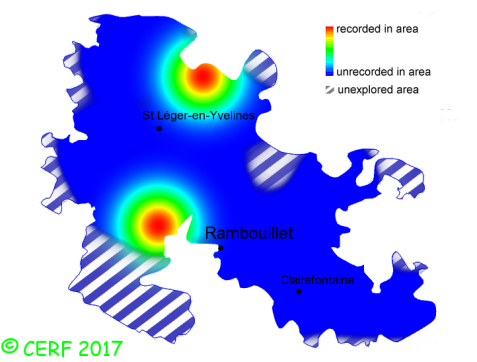|
Russula adusta (Pers.:Fr.) Fr.
|
common name(s) : Winecork Brittlegill
New classification: Basidiomycota/Agaricomycotina/Agaricomycetes/Incertae sedis/Russulales/Russulaceae
Former classification: Basidiomycota/Homobasidiomycetes/Agaricomycetideae/Russulales/Russulaceae
edibility : discard
|
|
|
The cap is dark red-brown to brown black; its margin is smooth.
The cap surface is smooth, viscid or sticky.
The stem is white, then brown-grey, without ring.
The flesh is turning brown without reddening; its taste is mild; the odour is mouldy, or of an old barrel;
its texture is grainy (breaking like a chalk stick).
The gills are cream, adnate, crowded .
The spore print is white. This species is mycorrhizal.
It grows on the ground, in coniferous woods, on a rather acid soil.
The fruiting period takes place from June to December.
| Dimensions: | width of cap approximately 12 cm (between 5 and 20 cm) |
| | height of stem approximately 7 cm (between 3 and 11 cm) |
| | thickness of stem (at largest section) approximately 25 mm (between 10 and 50 mm) |
Chemical tests : flesh becoming pinkish when in contact with iron sulphate; positive reaction to Ga´ac.
Distinctive features : large species; shiny to viscous cap surface; white to cream gills; stem and flesh briefly turning red when cut or pressed, then eventually turning grey-brown to smoky-grey (and not black)
Russula adusta is rare and confined in the forest of Rambouillet, and is occasional, more generally speaking
.
|  | | Above : distribution map of Russula adusta in the forest of Rambouillet |
|
page updated on 14/01/18